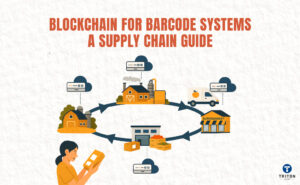Data Matrix barcodes are two-dimensional barcode symbology that allows for the storage and retrieval of data in a compact, square grid.
The Data Matrix code was developed in the 1980s by International Data Matrix Inc. (ID Matrix). It gained significant popularity due to its ability to encode large amounts of information in a very small space.
Unlike traditional linear barcodes that encode data in a single line, Data Matrix codes consist of black and white squares arranged in a matrix pattern. The size of the Data Matrix code can vary depending on the amount of information to be stored.
The Data Matrix barcode encodes various characters, including all 256 ASCII characters, ISO characters, and EBCDIC characters. Data Matrix codes can encode up to 2335 alphanumeric characters, 3,116 numerical characters, or 1556 bytes of information.
One of the key features of Data Matrix codes is their high data density. These barcodes can store a large amount of information in a relatively small space. This makes Data Matrix codes an excellent choice for applications where space is limited.
Data Matrix codes also offer robust error correction capabilities. By utilising advanced error correction algorithms, these barcodes can withstand up to 30% of damage and still be readable. This makes them ideal for labelling small items, where barcode labels may become damaged or obscured.
Another notable feature of Data Matrix codes is their readability. These barcodes can be scanned from any orientation, allowing for quick scanning without the need for precise alignment of the scanner.
Data Matrix codes have found extensive use in a wide range of industries. They are used in logistics and supply chain management for tracking and tracing products and in manufacturing processes for inventory control and quality assurance. They are also used in healthcare for patient identification, medication tracking, and medical device labelling.
A Data Matrix code is often confused with a QR code. Here is an article on Data Matrix codes vs QR Codes that will help you understand the difference between these two barcode types.






















